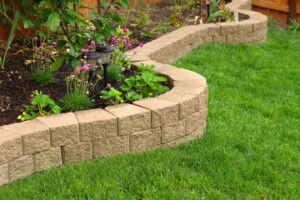Cleanstone Construction is an essential part of human progress, forming the physical foundation of societies and economies. It involves a wide range of activities, from the planning and design stages to the actual building and maintenance of structures. The process of construction brings to life the spaces where people live, work, and interact, shaping not only the landscape but also the way people experience their surroundings. While the specific details may vary depending on the type of project, the fundamental principles of construction remain largely the same across different disciplines and scales of work.

At the heart of any construction project lies a plan. This plan outlines the goals, materials, methods, and timeline for the project, ensuring that all stakeholders—engineers, architects, builders, and others—are aligned in their understanding of what needs to be accomplished. Construction plans are typically drawn up by designers who translate the conceptual vision into detailed, actionable steps. These plans include everything from the layout of a building to the type of materials that will be used and the techniques to be employed. A well-thought-out plan is essential for ensuring that a project is completed efficiently, safely, and within budget.
The next critical phase in construction is the preparation of the site. This involves clearing the land of any obstructions, such as trees or debris, and preparing the ground to support the planned structure. Site preparation may also include excavation, grading, and the installation of temporary facilities like utilities or access roads. This phase requires careful attention to detail to ensure that the construction site is safe and that the soil conditions are suitable for the type of foundation required. In some cases, geotechnical engineers are consulted to assess soil composition and ensure the stability of the site for future construction.
Once the site is ready, construction crews begin laying the foundation. The foundation is one of the most critical components of any building, as it supports the entire structure and must be built to last. Foundations can vary widely depending on the type of building and the soil conditions. For instance, a high-rise building may require deep foundations that extend several meters below the surface, while a single-story structure may only need a shallow foundation. In any case, the process of laying the foundation typically involves digging trenches or holes, pouring concrete, and reinforcing the foundation with steel rebar to ensure its strength and stability.
After the foundation is in place, the next step is the construction of the superstructure. This includes the framework of the building, such as the walls, floors, and roof. The materials used for the superstructure can vary greatly, with common options including steel, wood, concrete, and brick. Each material has its own set of advantages and challenges. Steel is known for its strength and durability, making it ideal for high-rise buildings or large structures that need to support significant loads. Wood, on the other hand, is lightweight and relatively easy to work with, making it a popular choice for residential buildings. Concrete is often used for both the foundation and the superstructure due to its versatility and ability to withstand the elements, while brick is valued for its aesthetic appeal and durability.
The construction of the superstructure involves the assembly of various components, which may include load-bearing walls, beams, columns, and floor slabs. The process can vary depending on the materials being used and the complexity of the design. For example, in steel construction, prefabricated steel beams and columns are often assembled on-site using cranes and other equipment. In contrast, wood-frame construction typically involves the assembly of individual pieces of wood, such as studs and joists, which are fastened together to create the structure of the building. The assembly of the superstructure requires skilled laborers, including carpenters, welders, masons, and ironworkers, all of whom work together to ensure that the building is safe and stable.
As the superstructure takes shape, the next step in the process is the installation of systems such as plumbing, electrical, and HVAC (heating, ventilation, and air conditioning). These systems are essential for the functioning of the building and are typically installed by specialized contractors. Electrical systems involve running wires throughout the structure to provide power to lights, outlets, and appliances. Plumbing systems include the installation of pipes for water supply and drainage, as well as fixtures such as sinks, toilets, and showers. HVAC systems ensure that the building is comfortable by providing heating, cooling, and ventilation. The installation of these systems often requires coordination between different contractors to ensure that all components are properly integrated and functioning as intended.
With the systems in place, attention shifts to the finishing touches that will make the building functional and aesthetically pleasing. This phase includes tasks such as painting, flooring installation, window and door fitting, and the installation of fixtures and fittings. The finishes applied during this stage can significantly impact the overall appearance and usability of the building. For example, high-quality flooring materials can enhance the aesthetics of a space, while well-installed windows and doors can improve energy efficiency and security. The finishing phase also involves the installation of any exterior elements such as siding, roofing, and landscaping, which help to complete the look and functionality of the building.
Throughout the construction process, safety is a top priority. Construction sites can be hazardous environments, with workers facing risks such as falling, being struck by objects, or being exposed to harmful materials. As such, safety protocols and regulations are strictly enforced on construction sites. Workers are required to wear protective gear such as hard hats, steel-toed boots, and high-visibility vests, and safety measures such as scaffolding, guardrails, and safety nets are installed to prevent accidents. In addition, construction companies are required to adhere to local building codes and regulations, which are designed to ensure that buildings are constructed safely and meet certain standards of quality and performance.
Another important aspect of construction is project management. Managing a construction project involves coordinating the efforts of a wide range of professionals and ensuring that the project stays on track. A construction project manager is responsible for overseeing all aspects of the project, including budgeting, scheduling, and quality control. They must ensure that the project is completed on time and within budget, while also maintaining a high standard of workmanship. Construction managers must also deal with any issues that arise during the project, such as delays caused by weather, material shortages, or unforeseen challenges. Effective communication and problem-solving skills are essential for ensuring the success of a construction project.
Construction projects can range from small residential builds to large commercial or infrastructure projects. Each type of project presents its own unique challenges and requires different expertise and resources. Residential construction typically involves building homes or apartment complexes, while commercial construction may involve the construction of office buildings, shopping centers, or hotels. Infrastructure projects, such as the construction of bridges, highways, or airports, are typically more complex and involve larger teams of workers and more advanced technologies. Regardless of the size or scope of the project, the principles of construction remain the same: the goal is to create a safe, functional, and aesthetically pleasing structure that meets the needs of its occupants.
In conclusion, construction is a multifaceted process that involves a wide range of activities and expertise. From the initial planning and design to the final finishing touches, every step of the construction process plays a crucial role in bringing a building to life. Construction is not only about the physical labor of building structures but also involves careful coordination, project management, and adherence to safety and regulatory standards. The end result is a built environment that shapes the way people live and interact, serving as a testament to human ingenuity and the ability to turn ideas into reality. The construction industry is vital to the continued growth and development of societies around the world, providing the infrastructure and spaces necessary for people to thrive.

